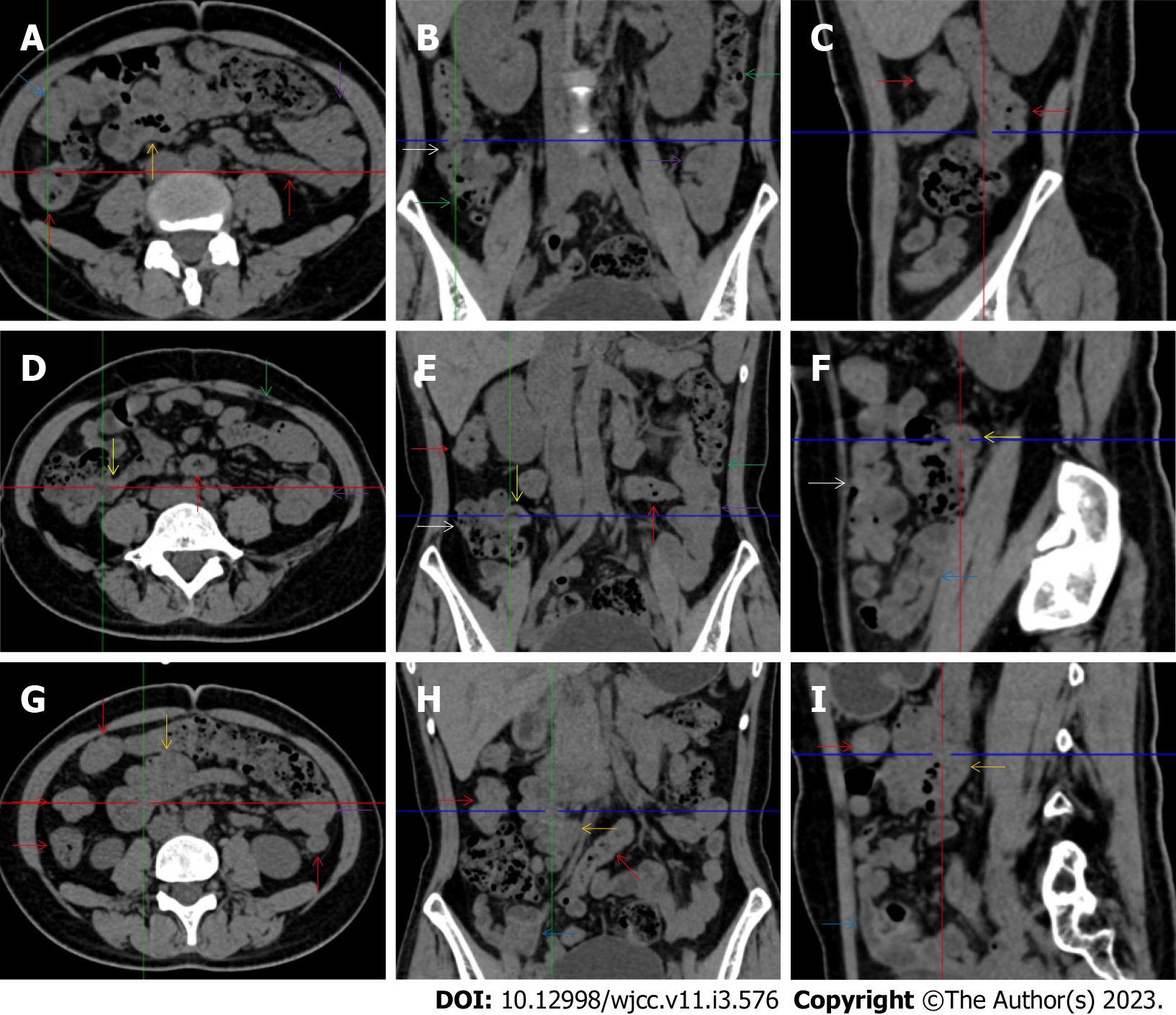Copyright
©The Author(s) 2023.
World J Clin Cases. Jan 26, 2023; 11(3): 576-597
Published online Jan 26, 2023. doi: 10.12998/wjcc.v11.i3.576
Published online Jan 26, 2023. doi: 10.12998/wjcc.v11.i3.576
Figure 5 Characteristic images of case 15.
A-C: Characteristic images of the ascending colon. The ascending colon was rugged with omental thickening and paracolonic fat stranding, and the colonic wall was thickened with mural stratification and intramural gas (white arrows). From the hepatic flexure to the sigmoid colon (red arrows), the bowel wall was thickened and stratified with several inflamed diverticula (green arrows) in these colonic segments. Three segments of adhesive bowel loops were visualized: one in the distal ileum (blue arrows), the other two in the middle ileum (orange arrows) and the jejunum (purple arrows); D-F: Characteristic images of the ileocecal region. The ileocecal valve and the terminal ileal wall were fibrotically thickened (yellow arrows), proximal to which the ileal lumen was liquid-filled; G-I: Characteristic images of the adhesive bowel loops in the middle and distal ileum. The bowel loop in the middle ileum was adhered and clustered (orange arrows), with the bowel wall being highly heterogeneous in texture and the mucosa being hyperdense. The bowel loop in the distal ileum was adhered, the lumen was liquid-filled, and the bowel wall was fibrotically thickened, together with the fibrotically thickened peritoneum forming the so-called “abdominal cocoon” (blue arrows).
- Citation: Zhao XC, Xue CJ, Song H, Gao BH, Han FS, Xiao SX. Bowel inflammatory presentations on computed tomography in adult patients with severe aplastic anemia during flared inflammatory episodes. World J Clin Cases 2023; 11(3): 576-597
- URL: https://www.wjgnet.com/2307-8960/full/v11/i3/576.htm
- DOI: https://dx.doi.org/10.12998/wjcc.v11.i3.576









